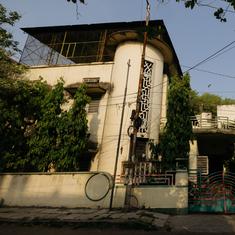Forget the Bechdel Test, which is a measurement of sexism in a movie. Even when women get leading roles on the silver screen, their characters are written mostly as sexual objects. Ross Putman, who has produced films such as Trigger Finger (2012), The Young Kieslowski (2014), and First Girl I Loved (2016) created the account @femscriptintros on Twitter to share how the female lead characters are introduced in actual scripts he has read. His bio states that except for the names which have been changed to Jane for anonymity, the scripts are verbatim. Here are a few examples that sound like they have taken from a Mills and Boon novel.
He enters and approaches JANE, mildly attractive secretary who is at one of the filing cabinets.
— Ross Putman (@femscriptintros) February 12, 2016
JANE stares into camera through intense eyes -- she’s beautiful but hard, like a layer of humanity has been scraped away.
— Ross Putman (@femscriptintros) February 11, 2016
JANE, with lengthy blonde hair, enters. Attractive in an effortless way, she carries an alluring and yet forward charm behind a bold smile.
— Ross Putman (@femscriptintros) February 11, 2016
JANE, 30s, attractive, intelligent, stands in the kitchen and turns to their housekeeper.
— Ross Putman (@femscriptintros) February 10, 2016
Since he set up the account and tweeted about Jane, who makes jeans look good, Putnam has amassed a following of over 56,000 people (and growing). Female characters are usually effortlessly pretty and unaware of the effect of their beauty on men.
JANE, 28, athletic but sexy. A natural beauty. Most days she wears jeans, and she makes them look good.
— Ross Putman (@femscriptintros) February 10, 2016
Putman is not the first person to highlight the problem of objectification of women in Hollywood. Miss L, an actress, anonymously tweets and maintains a tumblr of the sexism she encounters in her casting calls.
The world of casting calls is a dangerous place for women as our life expectancy seems to drop so dramatically... pic.twitter.com/ONI7uwEmVN
— Miss L (@ProResting) January 6, 2016
The scripts highlight a bigger problem: directors, writers and producers are mostly men. This disparity was highlighted in a report from the Center for the Study of Women in Television and Film, which found that women made up only 19% of the top behind-the-scenes jobs in Hollywood. The study also suggested that having a female director leads to greater percentages of women working in other leading roles. Out of the 500 films that were analysed, the study showed that having a female director meant that the percentage of women writers shot up to 53%, from the 10% of women writers in male-directed films.
Bollywood is not far behind in the objectification of women. A 2014 study by the Geena Davis Institute on Women in Media showed that in Bollywood, women are far less represented than men in front of and behind the camera. When women are in films, their attractiveness and sexuality are the most important factors on camera.
India leads in underlining the attractiveness among its female actors at 25.2%, beating Australia, the United Kingdom and the United States of America, along with topping the list for highlighting their sexuality on the screen.










